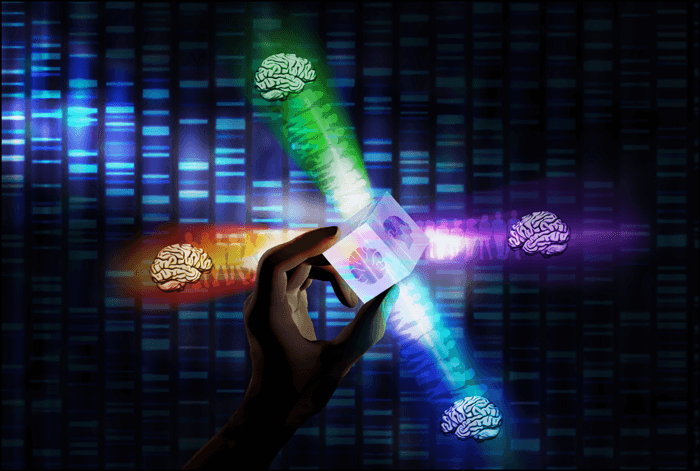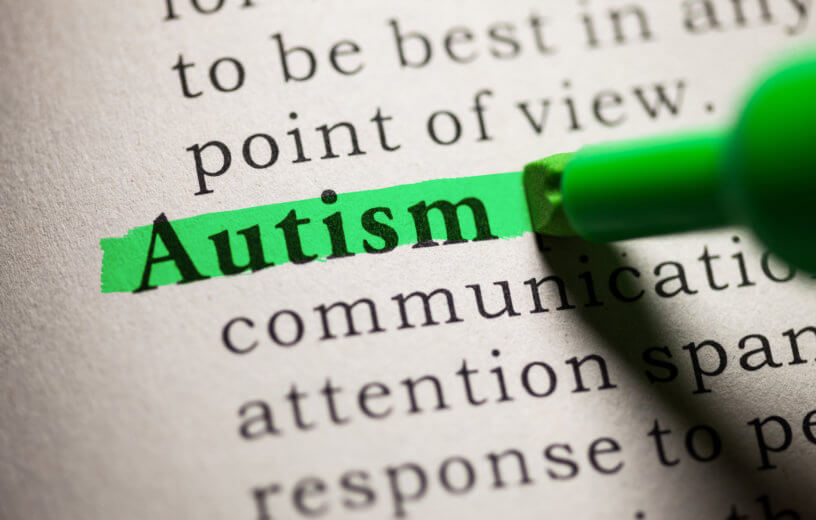NEW YORK — New research has discovered distinct subtypes of autism spectrum disorder (ASD) based on brain activity and behavior, according to a study by Weill Cornell Medicine investigators. By using machine learning to analyze neuroimaging data, the researchers identified patterns of brain connections associated with different behavioral traits in individuals with ASD. These findings offer new insights into the condition and could lead to improved diagnosis and personalized treatments for ASD.
ASD is a complex neurodevelopmental disorder characterized by difficulties in social interaction, communication, and repetitive behaviors. The study aimed to determine if there are different subgroups within ASD and to understand the underlying genetic pathways. By integrating neuroimaging data with gene expression and proteomics, the researchers identified four clinically distinct groups of individuals with ASD, each exhibiting unique brain connection patterns and behavioral characteristics.
“Like many neuropsychiatric diagnoses, individuals with autism spectrum disorder experience many different types of difficulties with social interaction, communication, and repetitive behaviors. Scientists believe there are probably many different types of autism spectrum disorder that might require different treatments, but there is no consensus on how to define them,” says co-senior author Dr. Conor Liston, an associate professor of psychiatry and of neuroscience in the Feil Family Brain and Mind Research Institute at Weill Cornell Medicine.
“Our work highlights a new approach to discovering subtypes of autism that might one day lead to new approaches for diagnosis and treatment,” Liston adds in a media release.

The study’s lead author, Dr. Amanda Buch, explains that the diagnostic criteria for ASD are broad, making it challenging to develop targeted therapies. Personalizing treatments for individuals with ASD requires understanding and addressing the biological diversity within the condition.
The identified subgroups exhibited variations in verbal ability, social communication, and repetitive behaviors. The researchers observed differences in brain circuitry between the subgroups, with some brain networks showing atypical connections in opposite directions. The study also identified specific genes linked to autism that explained the unique brain connections observed in each subgroup.
The findings have significant implications for developing more effective treatments for ASD. By identifying subgroups within ASD, it may be possible to assign individuals to therapies that are best suited to their specific needs. The study’s results underscore the importance of considering subgroups in clinical trials and tailoring treatments to address the diverse biological mechanisms underlying ASD.
The research team plans to further investigate the subgroups and potential subgroup-targeted treatments in mice. Collaborations with other research teams and the refinement of machine learning techniques are also underway. The ultimate goal is to advance our understanding of ASD and improve the lives of individuals with the condition.
Dr. Buch shared that they have received positive feedback from individuals with autism, emphasizing the potential impact of their work. A neuroscientist with autism expressed that being diagnosed with a specific subtype of autism could have been helpful for him, as it explained his unique experience within the spectrum. The study’s findings offer hope for a better understanding of ASD and the development of personalized interventions that cater to the diverse needs of individuals with autism.
The study is published in the journal Nature Neuroscience.
You might also be interested in:
- Rare gene variants passed on from parents may significantly increase risk of autism
- Autism can be detected with new smartphone app created by Duke scientists
- Yogurt for autism? ‘Very exciting’ study shows probiotic could serve as effective treatment for disorder


LAF. Never even mentions the labels or 4 categories, and only describes why defining them is important.
Did anyone ask us if we WANT to be “cured”?? For those of us that are high functioning, we don’t all want to be cured. Maybe you think we are a little weird or corky, but it is our superpower! We are physicists, engineers, financial advisors, computer programmers, analysts, scientists, and some of the world’s greatest problem solvers! Just because we don’t act the way YOU think we should doesn’t mean that it is bad, or at a detriment to ourselves or others. We live normal healthy lives with healthy meaningful relationships. Some of us may need some extra support in navigating those relationships, but we don’t cause harm to other (unless there is an underlying issue like personality disorder or something but that is not due to autism, and can occur in the neurotypical too!) I can’t speak for everyone and their flavor of neurodiversity or their specific challenges in life, so for some, there may be challenges that some people want support with specific challenges like those that are non verbal. But for those like me, we are thriving and we don’t want to be “fixed” or “cured”!
You lot have no shame. Your article doesn’t sound quite kosher to begin with. Then you claim to have a cure. Yet many neurotypicals are some of the dumbest I’ve come across. They have difficulty understanding what it means to leave us alone. They say they are trying to stop us committing suicide. Yet the methods they use are brutal and abusive, from attempting to humiliate us publicly to lying to us to get us interested in the daily drama to forcing us to interact with them by coming out the door the same time we do many times a day, everyday day of the week and this goes on for months and years, and I’ve not even mentioned the policing. What they do on a daily basis – the harassment and policing – is enough to drive anyone to suicideAnd the police and housing authorities just can’t be bothered. Their focus, instead, is to condescend and tell us we’re not quite right in the head. You have no shame. Some if us are being observed without our consent. That makes what you do unethical and renders your work worthless. And if you’re writing fake articles pretending to be authorities on the subject, then you’re just as deplorable. You have no right to treat us like we’re less. You have no right to keep provoking us so you can analyse our behaviour. Some of us are more intelligent than many of you. You have no shame.
You lot have no shame. Your article doesn’t sound quite kosher to begin with. Then you claim to have a cure. Yet many neurotypicals are some of the dumbest I’ve come across. They have difficulty understanding what it means to leave us alone. They say they are trying to stop us committing suicide. Yet the methods they use are brutal and abusive, from attempting to humiliate us publicly to lying to us to get us interested in the daily drama to forcing us to interact with them by coming out the door the same time we do many times a day, everyday day of the week and this goes on for months and years, and I’ve not even mentioned the policing. What they do on a daily basis – the harassment and policing – is enough to drive anyone to suicideAnd the police and housing authorities just can’t be bothered. Their focus, instead, is to condescend and tell us we’re not quite right in the head. You have no shame. Some if us are being observed without our consent. That makes what you do unethical and renders your work worthless. And if you’re writing fake articles pretending to be authorities on the subject, then you’re just as deplorable. You have no right to treat us like we’re less. You have no right to keep provoking us so you can analyse our behaviour. Some of us are more intelligent than many of you. You shameless, shallow, awful critters